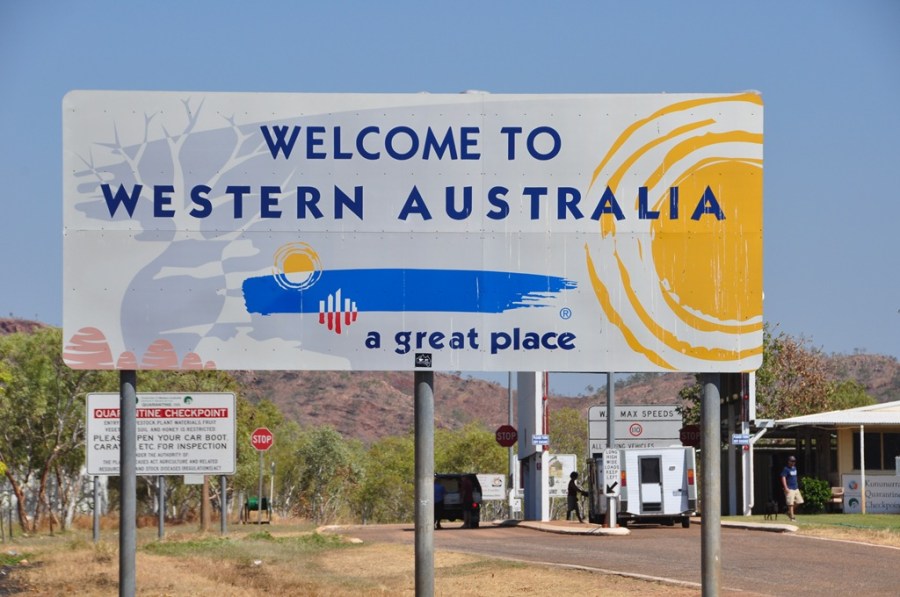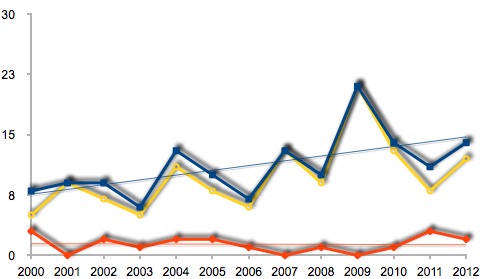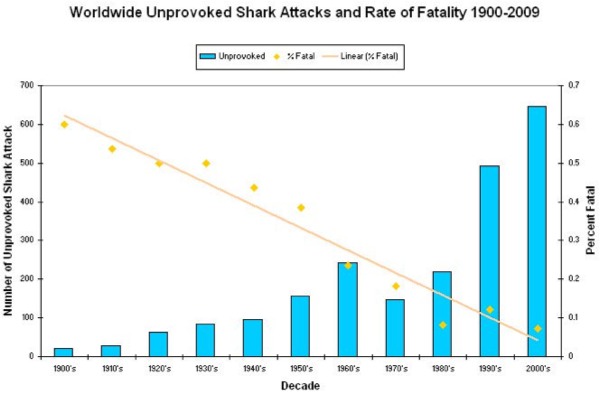
Two months ago (November 2017) the Western Australian Government released its Writing Sector Review. Okay, most of the readers here are international, so you’re probably shrugging your shoulders and reaching for an atlas – atlases are still a thing, right? But after my recent post on support for the arts (I was in favour as long as the support was for all authors, not just those deemed worthy/literary enough), I thought this review highlighted many of the same points and might be interesting.
Okay, that’s probably my West Aussie bias talking. But if it is a problem, just mentally substitute your local area name in place of Western Australia. The points raised appear to be universal. Well, Earthiversal. Well, Writerversial.
The Department of Culture and The Arts had nine recommendations in their report:
Recommendation 1: Maintain current levels of State Government funding to the writing sector
This point is at odds with the rest of the list. Lots of new stuff to fund but no extra funding to go with it. But I guess this is why they are writers and not economists.
Recommendation 2: Create a hub for writing and creative thinking at the State Library of Western Australia building
This makes sense, especially if this extends resources out to the larger library network in the state. And a coffee machine, this needs a coffee machine to be a creative hub.
Recommendation 3: Conduct a distinctive annual Western Australian Premier’s Book Awards The Western Australian Premier’s Book Awards
This is something that used to happen but became biennial. I’ll have more to say on this point, mark my words.
Recommendation 4: Use investment in the writing sector to achieve synergies with existing Statewide library services to extend and enhance community engagement in the reading of Western Australian writers
Honestly, why wasn’t this already a thing? “Sorry, we don’t have room for you West Aussie authors on the shelves, James Patterson just published 12 new books.”
Recommendation 5: Foster professional development for writers to enable them to navigate the increasingly complex areas of rights and multimedia opportunities
This is already available, but an expansion would be welcome news to all of the state scribblers. The isolation of Western Australia from the rest of Australia, let alone the rest of the world, is something that needs to be addressed. I wonder if there is a worldwide… network that could be used in some way to facilitate this.
Recommendation 6: Foster an environment to maximise the potential of Western Australian writers to be published
Like reminding the rest of the world that we exist. Or giving us decent internet. Or a can with a string attached.
Recommendation 7: Enhance data collection about Western Australian writing to provide benchmarks and evidence for policy development
Enhance? Starting would be good. As noted in the report, the Australia Bureau of Statistics stopped collecting data in 2003-04. Also great to see a report admitting they didn’t have evidence to base their recommendations upon.
Recommendation 8: Provide support for screenwriting and playwriting
Aside from all of those tax breaks that film and theatre already get….
Recommendation 9: Establish writer-in-residence opportunities at National Trust properties (Source)
This is a specific focus thing about promoting literature with a local history emphasis. I’m sure that will make someone happy. Like sleep medicine specialists.
The overall emphasis of the report is that Western Australia isn’t a cultural backwater yet it is treated as one. So the state government should do something about that by promoting locals writers, local stories, and more people to wear neck scarves and beret caps.
This is very similar to the calls from The Guardian last month, which I covered in my recent post, Literary Fiction in Crisis. The government should be doing more to support, develop, and nurture artists. The publishing industry is somehow not being asked to do this. Apparently, they are all tapped out, and definitely not owned by the biggest and most profitable media organisations.
There are a couple of big assumptions built into this report. The first most obvious one is that Western Australia isn’t a cultural backwater. Having lived here my entire life, I can confirm we are a backwater, and not just culturally. I think we need to accept this fact. Maybe if we grabbed a couple of cold beers and watched some sport it would help us get over ourselves.
The second big assumption is that writers in Western Australia are worth funding. Why? What exactly is the government trying to promote with this funding? Is there a return on investment intended? These things aren’t really defined, just asserted as true. Now, don’t get me wrong, everyone loves a government handout, just ask the banks who nearly destroyed the world’s economy. But I’d like to think that this funding is a bit better justified than it appears.
The other big assumption is that support should be directed at literary works. This is a common theme to these reports and the articles I discussed previously. The report recommends the Premier’s Book Awards be annual again, which they want to be used to promote West Aussie authors and Western Australia as a successful writing habitat – possibly with the inclusion of an emphasis on “emerging” and “developing” authors. I note that they aren’t proposing to support genre authors, nor have awards to promote them.
Why wasn’t there a conclusion that the Premier’s Book Awards should include Spec-Fic, Crime, Thriller, Romance, and YA segments? Are these not worthy? Do these genres lack enough subplots about recovering from cancer and relationships with cats? Because we can fix that.
As I noted in my Literary Fiction in Crisis piece, we could acknowledge that arts are an important aspect of our culture and support ALL artists with grants – not just the “important” literary ones. The initiatives that are meant to grow and sustain the writing sector always seem to be only for part of the writing sector. IF writing is to receive government assistance then it would be nice to see it not playing favourites without some damned good justifications. Until then it appears that some animals are more equal than others.
Edit: A recent article touched on a point about art vs sport and the taxation of people in those fields in Australia. Interesting what we promote as important.
5.1 CONCLUSIONS
In framing initiatives that will grow and sustain the writing sector, the following issues arising from the research and consultation process have influenced the consultants’ advice.
The creative process – the act of writing – is severely hampered by lack of time and money
Market development is a critical issue for everyone working in this sector in Australia, and one which WA needs to address with some urgency. WA’s isolation from decision-makers and peergroups exacerbates this
Proximity to Asia and the alignment of significant time zones offers a considerable opportunity for WA writers (and to the creative industries in WA more generally)
Market forces are causing publishers to become more conservative and mean they are not building writers careers in the same way. How is this gap to be filled?
Collaboration between allied and sometimes competing parties is an emerging model in Australia and internationally. With the disruption of internet and digital technologies there is a greater need for publishers to cooperate and negotiate with other firms, including competitors, or others such as games, software and media companies in order to create new products.
For emerging and small publishers, distribution can be a major hurdle
Self-publishing without an experienced guiding hand is a minefield for new writers
While authors still seek traditional publisher relationships there has been an increase in publishing innovation and technology driving new models. Australian publishers are experimenting across digital platforms with changes to royalty and subscription agreements, and providing free ebook downloads which helps make niche publishing projects viable
Digital opportunities are encouraging a more direct relationship between writers and readers, publishers and readers, booksellers and readers
Sales opportunities in the digital marketplace do not fundamentally alter the economics of publishing but have provided more opportunities for scholarly publishers
The WA writing sector is supported by a range of community-based writers’ centres, facilitating organisations and by writingWA
Throughout WA there are also 231 public libraries which provide a nexus for writers and readers in a geographically challenging state.
There is a strong regional literary festival culture in regional WA – often initiated or supported by the public library. Geraldton, Kununurra, Avon Valley, Broome, Margaret River and Mandurah Festivals are all initiatives of, or have strong links with, their public libraries, and funding from DCA, DRD and Royalties for Regions, delivered via writingWA
The history and capacity for publishing Aboriginal stories by Aboriginal people is a strength of WA writing
There is a need to increase the diversity of voices and participants in the writing community
Recent and current infrastructure developments, plus the proposed reconfiguration of SLWA offer opportunities for increased writing-based activity and activation
Changes to governance arrangements at Screenwest and its greater emphasis on the telling of WA stories offer opportunities for writers
 Old Scores by David Whish-Wilson
Old Scores by David Whish-Wilson






